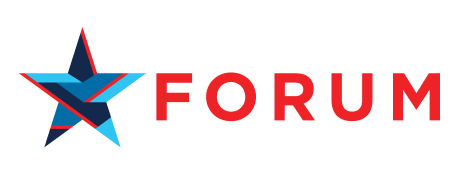The H-1B and L-1 Visa Reform Act of 2025 (S.2928) was introduced by Senate Judiciary Committee Chairman Charles Grassley (R-Iowa) and Ranking Member Dick Durbin (D-Illinois) on September 29, 2025. Senators Tommy Tuberville (R-Alabama) and Bernie Sanders (I-Vermont) are original cosponsors. Chairman Grassley, a longtime critic of the H-1B and L-1 programs, framed the measure as intended to protect American technology workers, stating that the programs “ought to be returned to their intended purpose” of providing “limited pathways for businesses to acquire top talent when it can’t be found at home.” The bill, a version of which was first introduced in 2007, is divided into two sections: Title I on H-1B (specialty occupation) visas and Title II on L-1 (intercompany transferee executive or manager) visas. Critics have warned that these types of broad restrictions would make it harder for the United States to attract global talent.
The H-1B and L-1 visa programs have been shown to yield significant economic benefits to the U.S. economy. The H-1B visa program encourages multinational firms to expand operations in the U.S., increases consumer demand, and fosters innovation and domestic job creation. It has been shown to have positive economic impacts for the vast majority of American incumbent workers (over 95%), including creating upward pressure on wages for many U.S. workers, especially those with less tenure or who work in complementary positions to H-1B hires. The smaller L-1 program is a useful tool that helps U.S. multinational companies to effectively manage their executive talent to best compete in the global marketplace.
Introduction of the bill came shortly after the Trump administration announced a new $100,000 fee on H-1B applications and a proposed rule that would overhaul the H-1B lottery.
H-1B Visa Reform
The legislation introduces several key changes to the H-1B application process and adds requirements that aim to prioritize American workers and prevent abuse of the program.
Petition and Selection Changes
- Tiered System: Establishes a new tiered system for petition approval (within the existing caps) that prioritizes education, with a focus on STEM, skill level, and expected wage, and empowers the Department of Homeland Security (DHS) with rulemaking authority.
- Wage Requirements: Adds a minimum threshold on wage requirements equal to the median wage for skill level 2 in the Occupational Employment Statistics Survey and specifies that H-1B employment may not adversely affect working conditions for United States workers similarly employed at the petitioning employer.
- Enhanced Requirements: Adds an education and licensing requirement for specialty occupations.
- New Limits on Extensions: Limits the extension of an H-1B authorization to three years, with limited exceptions for an extension of up to six years.
Worker Displacement Protections
- Posting Requirements: Creates a 30-day internet posting requirement for the position to be filled by the prospective H-1B visa-holder, to be managed by the Department of Labor (DOL).
- Displacement Period: Increases period of non-displacement of U.S. workers from 90 to 180 days before and after placement of H-1B visa-holder.
- Advertising Restrictions: Prohibits employers from exclusively advertising to, or recruiting from, a pool of prospective H-1B visa-holders.
- Proportional Requirements: Prohibits companies with 50 or more employees from having more than 50% of their workers be H-1B or L-1 visa-holders.
Investigation of Complaints Against H-1B Employers
- Oversight Capacity: Increases DOL oversight of applications, creates an additional processing and enforcement fee, and allows for the hiring of up to 200 new DOL employees to carry out oversight and enforcement functions over the programs.
- Investigation Authority: Empowers the DOL to launch investigations and issue subpoenas in response to credible complaints within two years of the alleged violation.
- Audit Requirements: Introduces annual mandatory audits of not fewer than 1% of employers with H-1B employees and of all employers with more than 100 workers where more than 15% are H-1B nonimmigrants.
- Compliance Requirements: Increases reporting and evidentiary requirements for employers.
- Penalties: Increases penalties for employer violations.
L-1 Visa Reform
The proposal introduces similar changes to the L-1 visa program and increases employer requirements.
Petition and Selection Changes
- Specialized Knowledge Definition: Defines “specialized knowledge” to require an “advanced level of expertise and proprietary knowledge of the employer’s product, service, research, equipment, techniques, management, or other interests of the employer are not readily available in the United States labor market.”
- Authorization Limits: Limits L-1 authorization period to one year unless employer demonstrates that prolonged authorization will not displace U.S. workers. Limits that authorization to twice every two years.
- Business Requirements: Increases business and evidentiary requirements for employers to qualify for L-1 visa.
- Investigation Authority: Empowers DHS to launch investigations into complaints within two years of the alleged violation and requires cooperation with the State Department.
- Audit Requirements: Introduces annual compliance audits conducted by DHS.
- Penalties: Creates penalties for employer violations.
Reporting
- DOL Report: Adds reporting requirements for DOL and mandates the Secretary of Labor create a report on how employers may hire more American workers.
Thank you to Matt Wadha, Policy and Advocacy Intern, for his contributions to this post.


